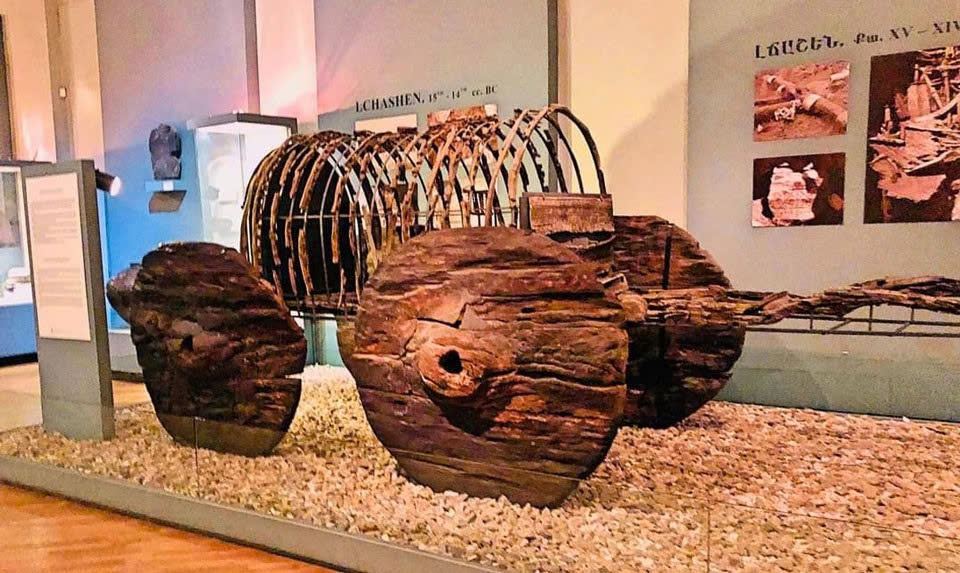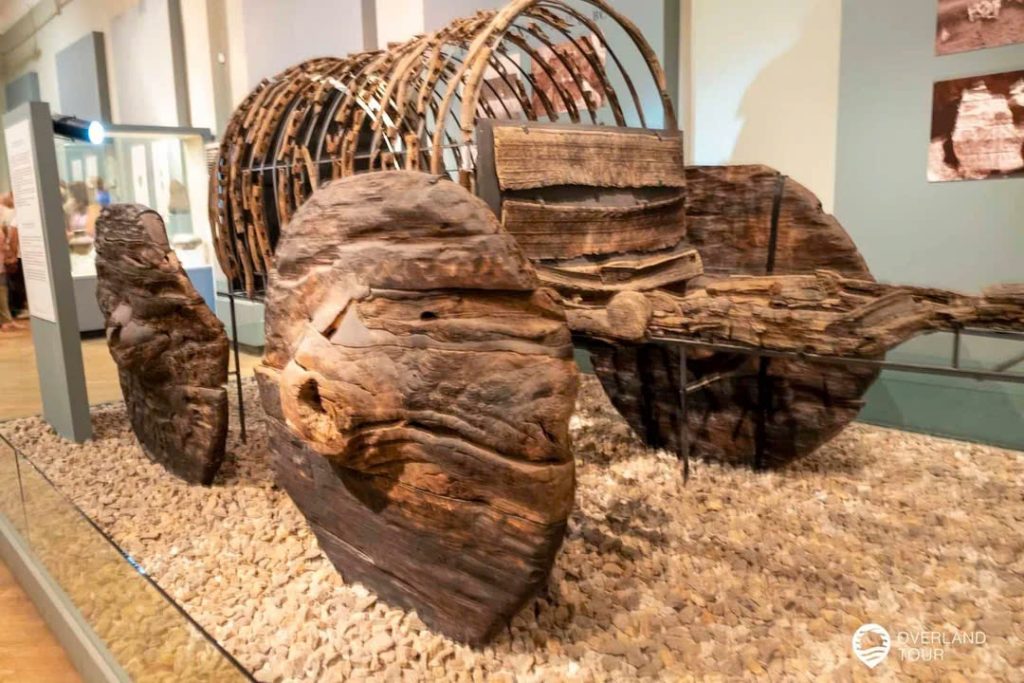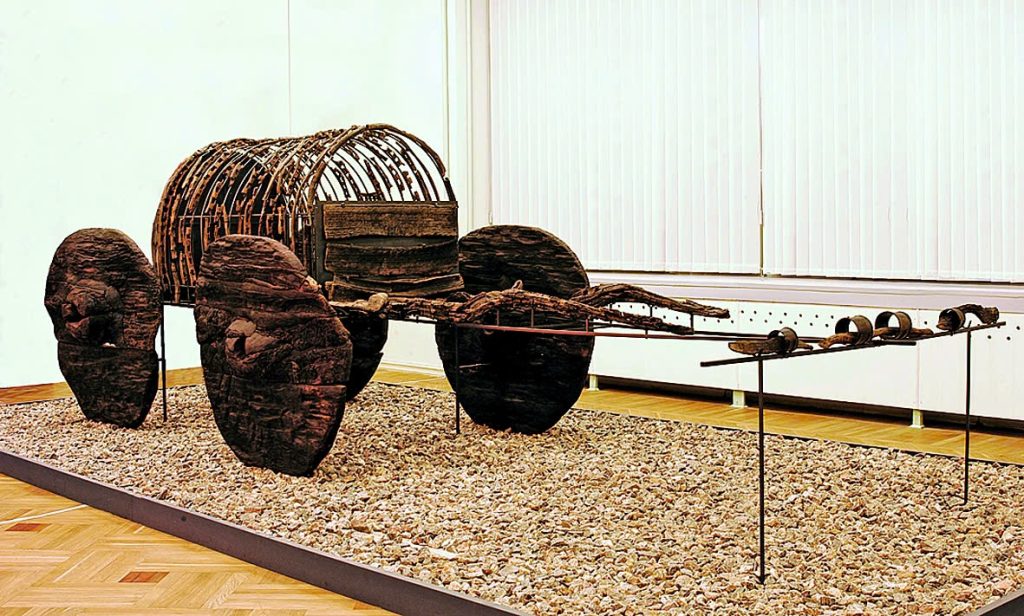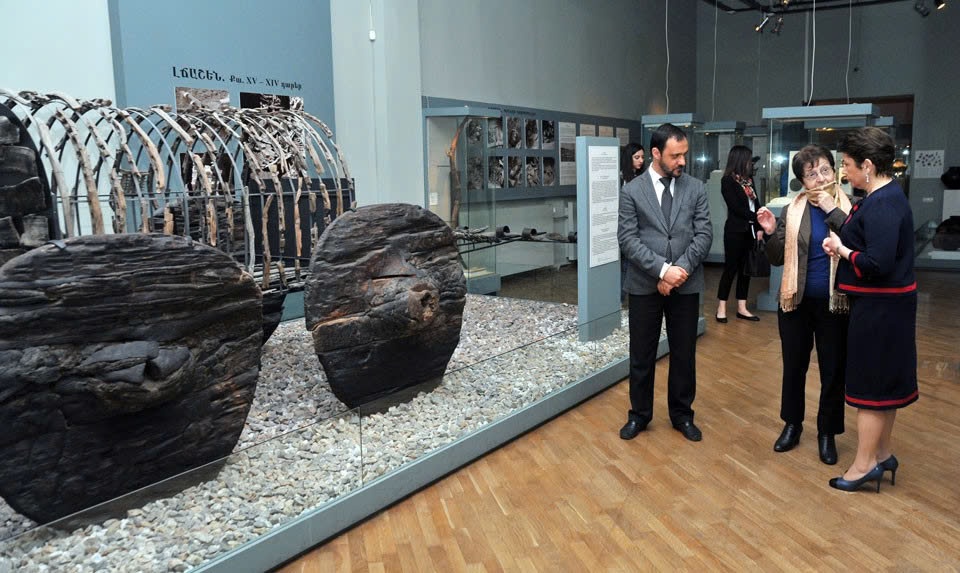In the heart of Armenia, a land steeped in ancient history and cultural heritage, archaeologists have unveiled an extraordinary discovery that has sent ripples through the global archaeological community. Near the pristine shores of Lake Sevan, at an excavation site known as Lchashen, a collection of remarkably preserved oakwood wagons has been unearthed. Dating back an astonishing 4,000 years, these artifacts are not only a testament to the craftsmanship of ancient Armenian artisans but are also believed to be the oldest known wagons in the world. This groundbreaking find sheds new light on the technological advancements and ingenuity of early civilizations and provides modern audiences with a tangible connection to the distant past.
A Testament to Ancient Ingenuity
The oakwood wagons, crafted entirely from one of nature’s most resilient hardwoods, showcase an unparalleled level of skill and innovation. Every detail of their construction reflects the sophistication of the ancient Armenian craftsmen who designed them. Each wagon features four sturdy wheels, ingeniously assembled from three carefully shaped planks of oak. The precision involved in the cutting and fitting of these planks is remarkable, even by today’s standards. To enhance durability, the interiors of the wagons were reinforced with withies—flexible branches or twigs that were skillfully woven to provide structural support.

This combination of sturdy materials and advanced engineering techniques illustrates the foresight and creativity of ancient Armenian artisans. These wagons were not merely utilitarian objects; they were masterpieces of design and functionality. Their construction required an in-depth understanding of the properties of wood, as well as an innovative approach to problem-solving. Such craftsmanship highlights the ingenuity of the people who lived in this region thousands of years ago, and their ability to adapt and thrive in challenging environments.
Unearthing a Hidden Treasure
The discovery of these ancient wagons is a story of meticulous archaeological effort and sheer determination. The excavation at Lchashen was no ordinary dig. The site, nestled near the tranquil waters of Lake Sevan, had long been known to hold archaeological significance. However, the unearthing of the wagons was unexpected and exhilarating. As the excavation progressed, researchers began to uncover fragments of oak, which eventually revealed themselves as parts of these ancient vehicles.
The preservation of the wagons is nothing short of miraculous. The unique environmental conditions at Lchashen, combined with the skillful burial practices of the time, helped shield the wooden artifacts from the ravages of time. This remarkable state of preservation allows researchers to study the wagons in detail, gaining valuable insights into their construction, usage, and cultural significance.
From Ancient Ruins to Modern Displays
The journey of these oakwood wagons from their resting place in the ground to their current home in the History Museum of Armenia has been an incredible voyage of discovery. The process of carefully excavating, documenting, and transporting these delicate artifacts was a monumental task that required the collaboration of archaeologists, historians, and conservation experts. Every step of this journey was undertaken with the utmost care to preserve the wagons’ integrity and ensure their historical value remained intact.
Now prominently displayed at the History Museum of Armenia, these wagons have become a focal point for visitors from around the world. The exhibit not only highlights the beauty and ingenuity of these ancient artifacts but also underscores their significance as a cultural and technological milestone. Visitors to the museum are often struck by the intricate craftsmanship of the wagons and the profound sense of connection they evoke to a civilization that thrived thousands of years ago.
Contributions to Archaeological Knowledge
The significance of the Lchashen wagons extends far beyond their physical beauty. These artifacts have made substantial contributions to our understanding of ancient transportation and the technological capabilities of early societies. Their discovery has been referenced in several esteemed academic works, including Beverley Davis’s “Timeline of the Development of the Horse” and Professor Stuart Piggott’s “The Earliest Wheeled Transport.” These scholarly analyses have helped contextualize the wagons within the broader narrative of human innovation and progress.

The wagons provide crucial evidence of the early use of wheeled transportation, a revolutionary development that transformed how people moved goods and traveled across great distances. By studying these artifacts, researchers have been able to trace the evolution of transportation technology and better understand the social and economic dynamics of ancient Armenian society. The wagons also offer a glimpse into the interconnectedness of ancient civilizations, as their design and construction suggest influences from neighboring cultures.
A Bridge to the Past
Standing before the oakwood wagons at the History Museum of Armenia, visitors are transported back in time. These artifacts serve as a powerful reminder of humanity’s enduring quest for innovation and progress. They are not just relics of a bygone era; they are a testament to the ingenuity and resilience of the people who built them. The wagons symbolize a bridge connecting us to our ancestors, offering a tangible link to the lives, aspirations, and achievements of those who came before us.

For Armenians, these wagons hold special significance as a source of national pride and identity. They are a reminder of the rich cultural heritage of the region and the remarkable achievements of its ancient inhabitants. For the global community, they represent a shared human legacy, a testament to the universal drive to overcome challenges and create solutions that stand the test of time.
Preserving the Legacy
The discovery and preservation of the Lchashen wagons underscore the importance of protecting our shared cultural heritage. These artifacts are more than just objects of historical interest; they are invaluable resources for education, research, and inspiration. Their continued study promises to yield new insights into ancient technologies, cultural practices, and human ingenuity.
As stewards of this legacy, it is our responsibility to ensure that future generations can learn from and be inspired by these treasures. The History Museum of Armenia plays a vital role in this effort, not only by preserving and displaying the wagons but also by fostering a deeper appreciation for Armenia’s ancient history among visitors from around the world.
An Enduring Inspiration
The story of the Lchashen wagons is one of discovery, preservation, and inspiration. These ancient artifacts remind us of the incredible achievements of our ancestors and the enduring power of human creativity. As we marvel at their craftsmanship and reflect on their historical significance, we are reminded of the timeless connections that bind us to the past.

In celebrating these wagons, we celebrate the ingenuity of the people who built them and the legacy they left behind. Their story is a testament to the resilience of human innovation and the enduring value of our shared cultural heritage. It is a story that continues to inspire and captivate, bridging the gap between ancient civilizations and the modern world.





